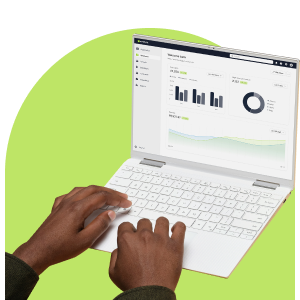
Email marketing continues to be a dominant channel for communicating travel messaging – and for good reason! At a time when the travel industry is booming, brands can successfully use emails to build trust, boost a sense of adventure, and nudge bookings. But the key is knowing how to craft your content effectively to persuade your recipients to act. We discovered a framework for how to do just this from analysing what worked best for the top-performing travel emails sent from our platform. The findings – which are compiled in our latest marketing report – are insightful and, at times, rather unexpected. Here, we break down the framework you need to use to enhance your travel email marketing.
Why Now Is the Time to Leverage Email Marketing
We know about the ‘revenge dress’ and ‘revenge body’, but have you heard of ‘revenge travel’? It’s where people seek opportunities to maximise their adventures to make up for time lost due to movement restrictions during the Covid-19 pandemic. This scarcity effect – or fear of missing out – plays a significant role in driving recipients to book their dream holidays.
Marketers are leveraging this rise in travel interest and expenditure for their email campaigns to marked success – and competition is rife. The travel, tourism, and hospitality industry has bounced back after the pandemic to reach record highs across flight, hotel, car rental, and holiday package bookings globally.
Since prospective travellers can access plenty of content about their trips and book online, email marketing continues to be a dominant communication channel. In 2022, nearly four-billion travel-related bulk emails were sent from Everlytic’s platform.
These insights show email marketing is popular and effective, but the question is, how do you ensure your travel emails stand out in crowded inboxes and gain traction? This is what we sought to find out for our latest report.
Check out this blog post to discover more about why we can say with certainty that email is a serious medium with huge growth potential.
How to Tailor Effective & Targeted Brand Comms
In a bid to find out what made the top-performing travel emails sent from our platform in 2022 so effective, we focused on which communication patterns were evident in the 20 emails with the highest open and click-through rates.
For this, we partnered with behavioural communications firm, BreadCrumbs Linguistics, to conduct a Behavioural Linguistics analysis to understand how communication can be tailored to nudge customers to take responsible action and which thought processes go into decision-making.
Behavioural Linguistics is a sub-discipline in the field of Behavioural Economics with a core belief that language is a powerful way to change behaviour. It’s significant for marketers as, by understanding the predictable patterns that influence how and why people act the way they do, we can craft brand communication to be even more effective and targeted.

For a detailed summary on how to use choice architecture to nudge action in marketing, check out this blog post.
8 Ways You Can Enhance the Language of Travel
Our research analysed the semantics, syntax, phonetics, visuals, and heuristics (biases) in the emails as these are the five pillars of a Behavioural Linguistics analysis.
There were eight key areas of the emails where we found predictable and persuasive communication patterns. Here’s a summary of what we learnt:
- Frequently Used Words: Win over recipients with language that motivates, exaggerates, builds brand allegiance, and creates a sense of convenience, uniqueness, and benefit. You can do this by using a few specific words. Of the 5,529 words analysed, 20 were most frequently used and they highlighted six language themes that you can adapt for your own travel emails.
- Subject Lines: A surefire way to catch attention in inboxes is with catchy, short, and succinct opening introductions that command action and drive a sense of urgency. Those that used imperatives (exclamation marks) received the highest open rates.
- Key Visuals: Don’t shy away from using imagery. A staggering 78 travel-related images were used in the 20 top mailers and, surprisingly, not all of them were high resolution or expertly taken. In fact, many of them went against the standards that behavioural guidelines usually recommend.
- Use of Emojis: While emojis have been used commonly in other successful campaigns, when you have great travel images, you don’t necessarily need emojis to sell your experience. In fact, we were shocked by the number of emojis used.
- Hedonic Language: You’re not just selling a trip, you’re selling an adventure, so it’s important to use language to build a sense of trust, exoticness, and persuasiveness. Rhyming and poetic devices work well.
- Nudgey Numbers: The way you market your offers matters when it comes to nudging your recipients to act. Think how your prices are positioned, how you frame your discounts, and how you show you are offering value.
- Calls to Action: Clear headings and bold calls to action work best, and the top-performing mailers used positioning and simple present tense to their advantage – and you should too.
- Time to Send: When you send a travel-related email is just as important as what you say in it. In the report, we break down the time of the day, day of the week, and month of the year that the best-performing mailers were sent.

Listen to our podcast episode with BreadCrumbs Linguistics’ Leigh Crymble as she shares more on the science behind creating content to nudge your retail customers to take action.
How to Nudge Customers to Take Responsible Action
Our report found it’s no coincidence the emails we analysed had the highest open and click-through rates. This is because in each of the emails there was a clear link between language, decision-making, and behavior.
This means these travel emails leveraged behavioral insights to craft authentic and compelling content. In doing so, they were able to grab attention, build trust and brand affinity, create engagement, and ethically persuade recipients to make decisions.
This finding is exciting for marketers as it shows we can incorporate a behavioral insights framework to ensure our emails are effective.

Sell an Adventure with Your Travel Emails
Our Behavioral Linguistics analysis shows incorporating behavioral insights to tailor your travel emails will help you to build trust, shape your customers’ choice architecture, and ultimately nudge them to make responsible decisions – like clicking on your calls to action. We invite you to download our free report to leverage behavioral insights and craft content effectively in eight key areas of your travel emails to get results from your next campaign.


